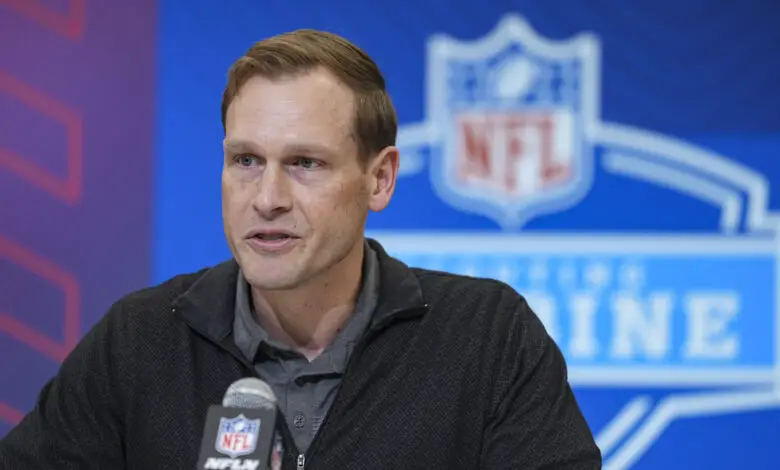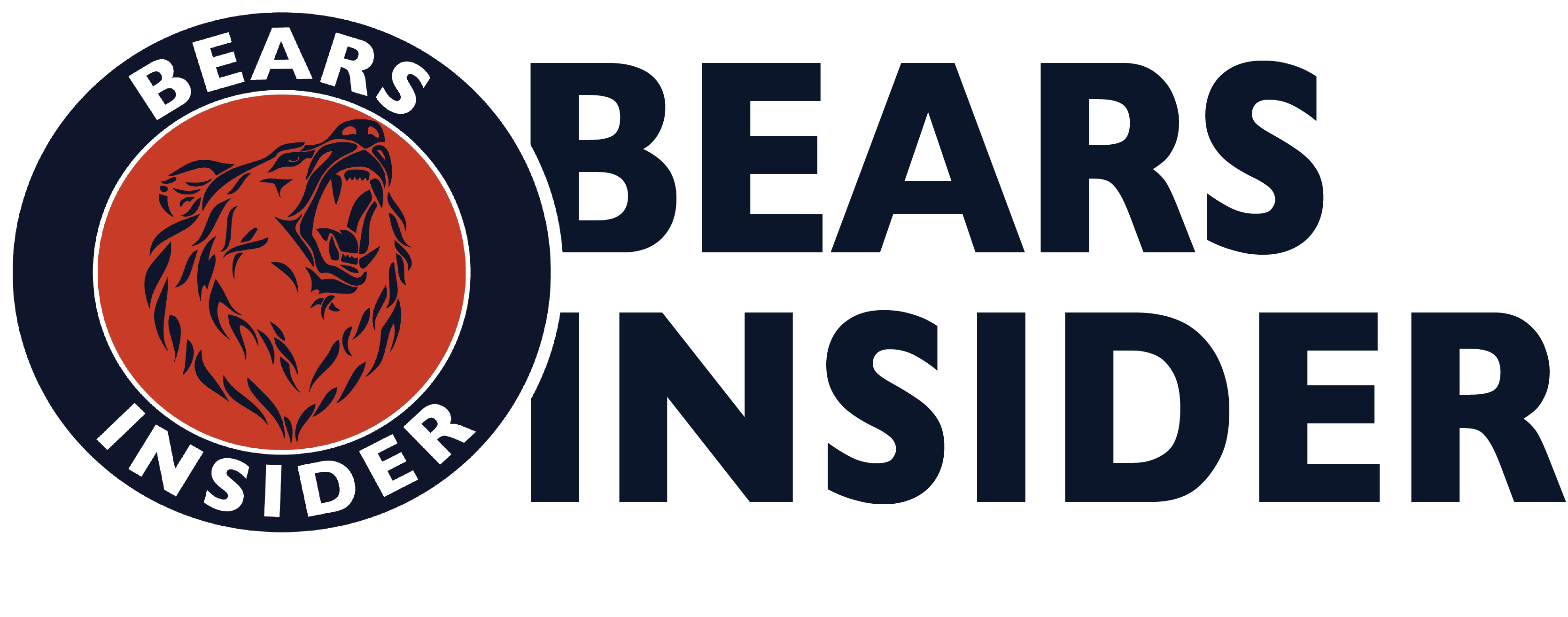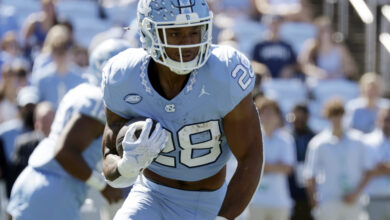
To free agency and beyond: Charting out the ideal Chicago Bears off season
With the guard position settled, the Bears can stay focused on other needs
Here’s to hoping Ryan Poles and Ben Johnson become Buzz Lightyear and Woody.
I don’t have a preference as to which. Poles definitely gives off more Buzz vibes. I think it’s because of the “Take the North and never give it back” thing, but I digress…
Next week free agency opens across the NFL and the last few days are indicating its time to buckle up.
Outside of Chicago, a sampling of the last 36-72 hours has provided: Dak Prescott restructuring his deal to clear $36.6 million in Dallas cap space. Maxx Crosby was extended by the Raiders. He also wants Aaron Rodgers on the team. Cooper Kupp is almost definitely being traded by the Rams. DK Metcalf wants out of Seattle. Jacksonville moved everything not nailed to the floor.
Inside Halas Hall, the Bears traded for Guard Jonah Jackson on Tuesday and Guard Joe Thuney on Wednesday. Those trades settle two of Chicago’s top needs, adding instant starters to the offensive line next year.
Last month, I took a high-level overview of Chicago’s needs and a lot has changed since then. That article will be the guidepost for what’s ahead. Since that published, Trey Smith was franchise tagged by the Chiefs. The NFL Combine happened. Then, the two trades above.
With that, this article is an exercise not in predicting the Bears’ off season. Rather, it’s a mock off season. It’s a pathway to building it from here on out. We’re not getting wild and crazy. There will be no Myles Garrett trade. Smith isn’t going to be a tag-and-trade prediction (moving Thuney solidified that as a non-option for the Chiefs). Abdul Carter isn’t inexplicably falling to No. 10, based on our current knowledge.
The draft portion (through Round 3) factors in a first-round mock draft that will come out later this week. The Day 2 picks are based on a loose expansion of that mock.
Let’s roll up the sleeves and get to work.
Where things stand now
I wrote in the overview that culture and the offensive line were of the utmost importance for Chicago to address. Two starting guards and a center were essentially 1a, 1b and 1c priorities. Edge rusher was second. Left tackle and defensive tackle 3a and 3b. The rest is gravy.
So far, so good.
The Bears didn’t sign or trade for Lucas Patrick and Ryan Bates as in years past. They’ve added a starting caliber guard (when healthy) well-known by the head coach, and a four-time Super Bowl winner under Bill Belichick/Tom Brady and Andy Reid/Patrick Mahomes. Both essentially on one-year deals.
When all I wanted was a coherent strategy, Poles and Johnson one-upped me by jumping the market on guards. Even when it meant eating cap space and a few draft assets.
The Athletic lists 10 guards among its top-150 free agents. Depending on which draft analyst you read, there’s fewer than 10 among top-50 draft prospects. That number is based on true guards and prospects like Will Campbell, who can flex into different roles.
I scoured NFL rosters and more than half the league needs to add at least one starter on the interior line, or lacks a clear replacement to a free agent. The center market is more limited to the Bears, Chargers, Jaguars and Packers. Green Bay seems set to aggressively add elsewhere. Jacksonville has bigger needs at wide receiver, guard, tight end and across the defense. New England and its cap space behemoth is lurking if Cole Strange doesn’t stay at center.
Still, the Bears can zero in on their first and second targets at each position. This as opposed to having a handful or more of high-level negotiations happening at once. How important is center for the Patriots when they need just about everything else?
With $45 million in cap space, Chicago can focus its spending on the center and edge rusher markets. If the Bears leaves free agency with a starter at both positions, they’ll be positioned to add value and depth in the draft.
Let’s go shopping
Using Spotrac to design the contracts, I’m chasing two higher-end free agent signings for the Bears. As part of the exercise, let’s assume they come in higher than market level.
I’m also abandoning the idea of a Jonathan Allen trade after the two guards were added. If he’s released by the Commanders, my tune might change depending on the cap number and contract length.
Sign C Drew Dalman (3/$40M)
Three years and $20 million is the market value, but he easily exceeds $10 million annually with the record-high salary cap. Dalman will stay under Creed Humphrey’s $18 million AAV and could close out over the $12 million mark.
The last round of center contracts were signed in 2024. Three were inked at Dalman’s age (26). Andre James signed with the Raiders at 3/$24M. Tyler Biadasz signed with Washington at 3/$29M. Lloyd Cushenberry went to Tennessee at 4/$50M.
Do recent injuries hurt Dalman’s market? Maybe. He played 17 games in each of 2021 and 2022, and 14 games in 2023. An ankle injury limited him to nine games in 2024. I’ll approach this with belief that 2021-2023 is what you’re getting.
Let’s consider the market change from Humphrey and aim high. A small bidding war with the Chargers drives Dalman to 3/$40 million at $13.3 million AAV. He can hit free agency again before age 30. Bidding war loser gets Ryan Kelly.
Depending on other moves, Poles can structure this to lessen the cap hit this year. We’ll keep it simple with a $15 million bonus and a $7 million base. The $12 million cap hit in 2025 brings Chicago’s total down to $33 million.
Sign Edge Chase Young (4/$72M)
Pass rushers hitting the open market at 26 years old are rare.
Young enters coming off a one-year prove-it deal in New Orleans. He recorded only 5.5 sacks in 17 games but was ninth in pressure rate. PFF graded him as the 72nd edge rusher, which tracks with The Athletic’s note that Young cleaned up on backup tackles.
Injuries have played a large role in Young’s career so far. His age and pedigree as a No. 2 overall pick will bring suitors, but production and injuries might limit his ceiling market.
Last year was the first time since his rookie year in 2020 that he played in double-digit games. He’s never put together more than 7.5 sacks. In a lot of ways he mirrors the production of former Commanders teammate Montez Sweat before he was traded and extended with the Bears.
Sweat signed at 4/$98M and is almost two years older than Young. Production has been close to the same, but Sweat rarely missed time. The Bears have an out on Sweat’s deal after this year for only $8.1 million in dead cap.
Young’s market value is 4/$70M. The Bears go a little higher than that and structure it in a similar way with the opt out. We’ll go $12 million base and $30 million bonus for a $19.5M cap hit. That’s high but remember the options. Young can play out the entire deal and hit the market at 30.
Chicago has $13.8 million left in this scenario.
Other free agent moves
The interior defensive line market is deep and there’s a lot of need for the position.
I like B.J. Hill, 29, at the right price or if the Bears have to shift resources to a lesser center or edge. He graded out as the 22nd best DT against the run last year and Chicago ranked among the worst defenses against the run. His market value is $9.8 million and signing him should be followed by cutting Andrew Billings ($3.3 million cap savings).
If this scenario or similar plays out, Chicago should let the market settle from here. Maybe Hill or Allen can be nabbed on a below-market rate for a year. I’d also like to see the Bears bring in a veteran backup quarterback, or literally anyone not named Tyson Bagent.
The Chicago Bears are on the clock
With three picks among the first 41 and No. 72, the Bears have a real chance to bring on impactful young talent. I’m not projecting any trades up or down for Chicago at this point.
My full Round 1 mock draft will be out this weekend as the cut/restructure dust settles. I’m not mocking any trades there, either. The below picks are based on the Round 1 mock. As mentioned earlier, the Day 2 picks are based on a loose expansion of that mock. I’m going to sidestep the Day 3 picks for now.
Round 1 (pick 10): Armand Membou, OT, Missouri
It’s a full-on offensive line overhaul. Johnson told reporters at the Combine it could be done in a year, and this pick puts a bow on that prediction.
Membou improved his draft stock significantly with a monster Combine. There’s some scouting reports suggesting he’s a better guard fit and others that he’s a true tackle. That flexibility is more appealing if one of Thuney or Jackson don’t return in 2026.
Braxton Jones gets real competition at left tackle coming off a leg injury and facing an extension. Caleb Williams should be a happy QB after this pick. With two second round selections at No. 39 and No. 41, Chicago can address the defensive line or playmakers.
Round 2 (pick 39): Darius Alexander, DT, Toledo
Alexander is very easily gone at this point, but if he’s not, the Bears should pounce. I have four defensive tackles going in the first round and Alexander is last of the consensus top 5 left at the position. He was a Combine winner after some of the top prospects skipped workouts. Mel Kiper’s post-Combine rankings have him ahead of two first rounders, but this draft is a toss-up at a certain point.
After addressing the offensive line with aggressiveness, Poles and Johnson add a three-technique to pair with Gervon Dexter Sr. as a potential plug-in starter.
Round 2 (pick 41): Landon Jackson, Edge, Arkansas
I considered a lot of edge rushers here. It’s a deep class. Jack Sawyer and J.T. Tuimoloau from Ohio State will be in the mix. I went with Jackson after an outstanding Combine workout. His size (6-7, 280) is ideal for Dennis Allen’s system and he has a high ceiling with his athleticism. In this scenario, with Sweat and Young are locked up, so the Bears can take a calculated risk on one of this draft’s physical freaks to rotate in the pass rush mix.
Round 3 (pick 72): Jack Bech, WR, TCU
With the trenches taken care of, the Bears can address a less urgent need here. Tyler Scott would pencil in as the. No. 3 receiver behind D.J. Moore and Rome Odunze. Adding Bech represents a potential upgrade and true slot receiver. Depending how the draft board falls, they could look toward running back here. I wouldn’t rule out safety either with Kevin Byard and Brisker both in their final years. Adding depth to the offensive line (it’s a theme after all) is also possible.
Looking forward
CB Kyler Gordon is due an extension and he’s best setup to cash in on that before the season starts. Brisker, Jones and LB T.J. Edwards are also extension candidates. Brisker is a valuable part of the defense, but the trio could be more wait-and-see candidates right now.
Edwards reaching free agency will have $7 million off the books. Byard represents another $8.5 million. Notable pending free agents also include Ryan Bates ($4M), Jonathan Owens ($1.9M), Dominique Robinson ($1.2M) and Bagent ($1M).
I mentioned the out on Sweat’s contract option in 2026 if he under performs. LB Tremaine Edmunds is the most logical cap casualty. Chicago has a $2.4 million dead cap hit on him after the season, clearing $15 million in space.
Cole Kmet could be a cap casualty if he turns out not to be a fit. Whether he’s cut or traded, Kmet comes with $4.8 million dead cap and $11.6 million in cap savings this year. The Bears have easy outs in 2026 ($3.2M dead cap/$8.4M savings) and 2027 ($1.6M dead cap/$10M savings) on his deal.
Chicago has $44 million of current dead cap space coming off the books after 2025.

